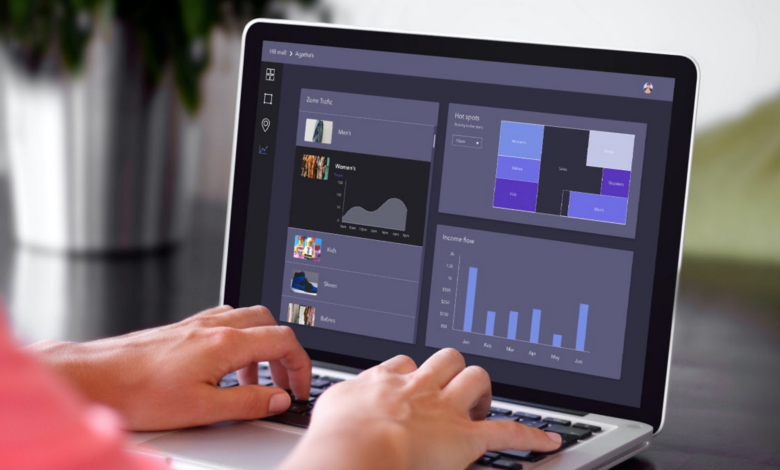From Traffic to Insights: The Growing Role of Retail Analytics Software in Modern Stores

In today’s competitive retail environment, understanding customer behavior has become just as important as driving sales. As shoppers increasingly expect personalized, convenient, and seamless experiences, brands must look beyond surface-level metrics to truly understand what’s happening inside their stores.
This is where Retail Analytics Software and tools like the footfall counter come into play. By transforming raw in-store traffic data into actionable insights, they are revolutionizing how modern retailers operate, strategize, and grow.
Introduction: The Rise of Data-Driven Retail
For years, e-commerce has had the upper hand in analytics. Every click, search, and purchase online is tracked, analyzed, and optimized for better outcomes. Brick-and-mortar stores, on the other hand, once struggled to measure customer behavior beyond simple sales figures.
But that’s changing fast. Today’s Retail Analytics Software is empowering physical stores to capture and interpret data with the same precision as online platforms — and it all starts with the footfall counter.
By understanding not just how many people walk into a store but how they move, interact, and make decisions, retailers can unlock powerful insights that improve everything from staffing to layout to marketing performance.
What Is a Footfall Counter and Why It Matters
A footfall counter is a device that measures the number of visitors entering or exiting a store. Modern counters use a range of technologies, including infrared sensors, AI-based cameras, thermal imaging, and Wi-Fi tracking, to deliver accurate and real-time visitor data.
However, the true value of this technology emerges when the data is interpreted and contextualized by Retail Analytics Software. They help convert raw numbers into strategic insights that drive better decision-making and tangible business results.
How Retail Analytics Software Transform Traffic Data into Insights
Let’s explore how Retail Analytics Software are redefining in-store retail by leveraging footfall counter data in innovative ways:
1. Measuring More Than Just Store Visits
While a footfall counter tracks how many people visit a store, Retail Analytics Software go further by analyzing how that traffic behaves. They measure dwell time, entry and exit points, peak hours, and even repeat visits.
This granular data helps retailers understand not just how busy their store is, but how effectively it converts traffic into actual buyers — offering a deeper look at store performance beyond sales figures.
2. Optimizing Store Layout and Design
Every retailer knows that store layout directly impacts sales. But designing an effective layout requires more than intuition. By analyzing traffic patterns from footfall counters, Retail Analytics Software identifies which areas attract the most visitors and which remain underutilized.
Retailers can then rearrange products, signage, and displays to improve navigation and maximize visibility — ensuring customers naturally gravitate toward key product zones.
3. Enhancing Staff Scheduling and Customer Service
Foot traffic isn’t constant throughout the day. A store may experience heavy rush hours in the evening and quieter times in the morning. By monitoring real-time footfall counter data, Retail Analytics Software helps retailers schedule staff strategically.
This ensures optimal coverage during peak periods and reduces unnecessary labor costs during slow hours — balancing efficiency with quality customer service.
4. Tracking Marketing Campaign Effectiveness
How do you know if your recent promotion or advertisement actually brought people into the store? That’s where footfall counters shine.
By comparing pre- and post-campaign traffic data, Retail Analytics Software can measure how effective each marketing effort was at driving in-store visits. Retailers can then fine-tune future campaigns to focus on what truly attracts customers.
5. Understanding Conversion Rates and Missed Opportunities
A store may have high foot traffic but relatively low sales — a signal that potential buyers are not converting. By combining footfall counter data with sales figures, Retail Analytics Software calculate the conversion rate, revealing how many visitors actually make a purchase.
If conversion rates are low, it indicates a need for improved merchandising, pricing, or customer engagement strategies.
This level of insight helps retailers not only attract customers but also convert them into loyal buyers.
6. Supporting Inventory and Demand Forecasting
Visitor patterns often predict sales demand. For instance, if a footfall counter consistently records increased traffic on weekends or during festive seasons, Retail Analytics Software can help retailers plan stock levels accordingly.
By aligning inventory management with real-time footfall trends, retailers can prevent both overstocking and stockouts — improving profitability and customer satisfaction.
Benefits of Footfall Counters in Modern Retail
The integration of footfall counters with the expertise of Retail Analytics Software brings a host of tangible benefits, including:
- Data-backed decision-making: Move from guesswork to informed strategies based on real insights.
- Operational efficiency: Optimize store layout, staffing, and marketing for peak performance.
- Enhanced customer experience: Identify patterns that improve the in-store journey.
- Better ROI measurement: Track campaign success with precision.
- Competitive advantage: Stay ahead by leveraging data that others overlook.
By converting traffic into insights, retailers can make smarter decisions that directly influence sales, satisfaction, and long-term success.
The Future of Retail Analytics: Smarter, Predictive, and AI-Driven
As technology evolves, so does the role of Retail Analytics Software. The future lies in predictive analytics — using footfall counter data not just to report past performance, but to forecast future trends.
With AI, retailers will be able to predict store traffic patterns, anticipate customer needs, and even automate responses in real time — from personalized offers to dynamic staff allocation.
Ultimately, the integration of AI, IoT, and advanced analytics will transform the physical retail space into a smart, data-driven ecosystem that rivals online precision.
Conclusion
Modern retail success depends on more than just high traffic or strong sales — it relies on understanding the why behind every customer action. Footfall counters, when paired with the analytical power of Retail Analytics Software, enable retailers to make smarter, data-informed decisions that drive growth and enhance in-store experiences.
By turning raw visitor data into meaningful insights, brands can bridge the gap between online analytics and offline realities — ensuring every square foot of their store contributes to measurable success.
In short, the journey from traffic to insights is no longer optional — it’s the new foundation of modern retail intelligence.
FAQs
1. What role does a footfall counter play in retail analytics?
A footfall counter tracks the number of visitors entering or leaving a store, providing data that Retail Analytics Software analyses to assess performance, customer flow, and conversion rates.
2. How do Retail Analytics Software use footfall data?
They combine footfall counter data with sales, marketing, and staffing metrics to deliver insights that help retailers improve operations, layouts, and marketing ROI.
3. Can footfall counters improve store sales?
Indirectly, yes. By providing insights into customer behavior and store performance, footfall counters help retailers make smarter decisions that lead to higher sales and better engagement.
4. What technologies power modern footfall counters?
Advanced footfall counters use infrared sensors, AI-based cameras, thermal detection, and Wi-Fi tracking to collect accurate visitor data in real time.
5. Are footfall counters only for large retail stores?
No. Retail Analytics Software offers scalable solutions, making footfall counters suitable for small boutiques, supermarkets, and large retail chains alike.




